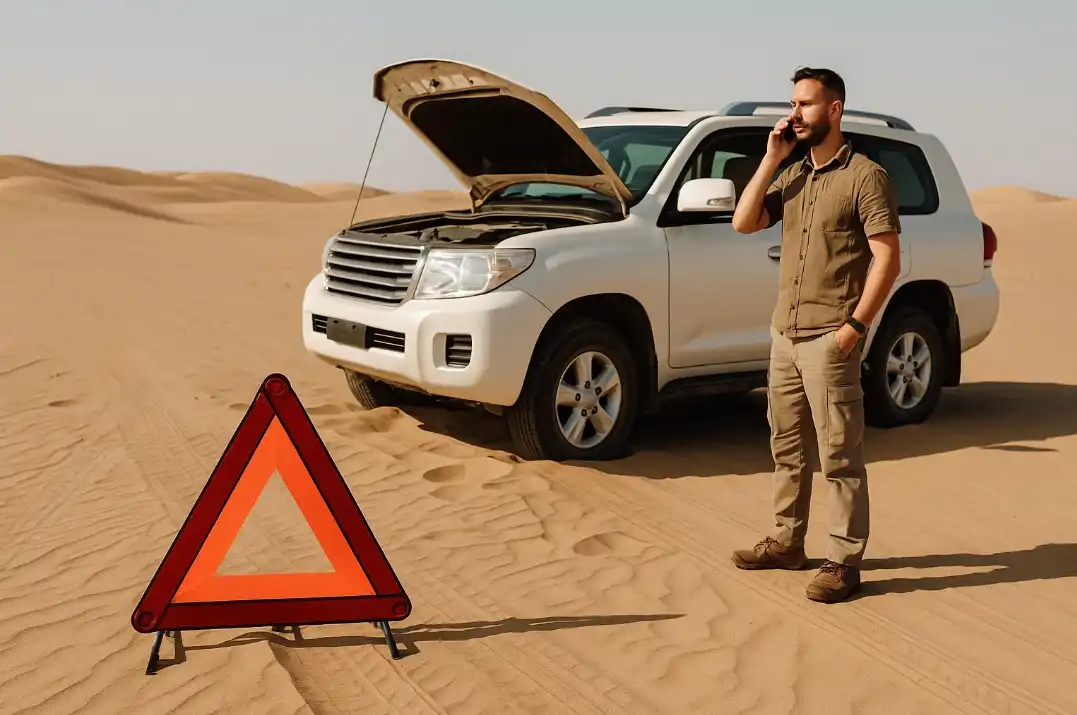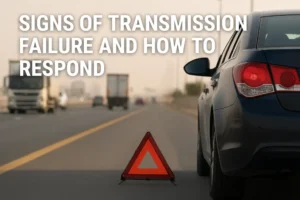Introduction
Desert safari tours offer excitement, adventure, and unforgettable moments. But if your vehicle breaks down in the sand, the experience can quickly turn stressful – you’re far from civilization, temperatures are extreme, and help may not be nearby. Here’s a practical guide on how to handle a car breakdown during a desert safari, so you stay safe, comfortable, and prepared until help arrives.
First Priority: Stay With Your Vehicle
Getting out of the car to find help can expose you to dangers such as extreme heat, disorientation, and wildlife. Your vehicle provides shade, visibility, and a point of reference for rescuers. Keep hazard lights on, engage four-wheel drive if available, and stay inside until you can call for help.
Basic Self-Checks You Can Perform
Before calling for rescue, perform these quick checks:
| Check Type | What to Look For |
|---|---|
| Tire condition | Look for punctures or shredded tread, especially after dune drives |
| Engine temperature | Check the gauge if it’s overheating, do not restart engine |
| Fluid levels | Quickly assess coolant, oil, and brake fluid |
| Electrical systems | Try turning lights or indicators to spot battery issues |
If everything seems intact, lower tire pressure for improved traction and attempt a rescue maneuver. If unsuccessful within 5 minutes, stop and call for help.
Signaling for Professional Help
Use your mobile phone to call for assistance. Provide clear information: GPS coordinates, nearest landmark, issues you’ve encountered, and your vehicle type.
Use this WhatsApp link for professional desert recovery help: Recovery Truck Near Me
If you’ve alerted your safari operator, notify them as well. Keep hazard lights on and, if safe, deploy a reflective triangle or flag to mark your location.
When to Attempt Self-Rescue
Only attempt recovery if these conditions are met:
- You are experienced with off-road driving
- You have proper equipment (shovel, traction mats, air compressor)
- You’re accompanied by at least one other vehicle
- You’re in sight of other safari participants
- You’ve made an initial recovery attempt but aren’t worsening the situation
Solo attempts can backfire – bigger damage, injuries, or delays can result from one wrong move.
When to Wait for Professional Recovery
If any of the following apply, stay with your vehicle and wait:
- Engine is overheating or emitting smoke
- You’ve exceeded 5 minutes of recovery attempts
- You’re stranded alone and without proper tools
- Night is approaching or temperatures are extreme
- Continued driving could cause more harm to the vehicle
A professional team can safely tow you out, repair flat tyres, and escort you back to your safari camp.
Staying Safe While Waiting
Remain hydrated – drink 1–2 litres of water every hour if stuck. Keep engine and A/C off if overheating risks are present. Use sun protection like caps, covered clothing, and even shade cloths. Limit direct contact with hot metal surfaces.
Post-Recovery Steps
Once you’re out and back at camp:
- Inspect tyres, suspension, belts, and fluids with the guide’s mechanic
- Record any damage or expenses for your tour insurance claim
- Use this experience to prepare better next time – pack light but essential tools and supplies
Final Thoughts
A desert safari car breakdown doesn’t have to ruin your adventure. Staying calm, performing simple checks, using clear communication, and knowing when to call professionals like Recovery Truck Near Me will ensure safety and peace of mind. With proper preparedness, your desert journey can remain memorable for all the right reasons.





